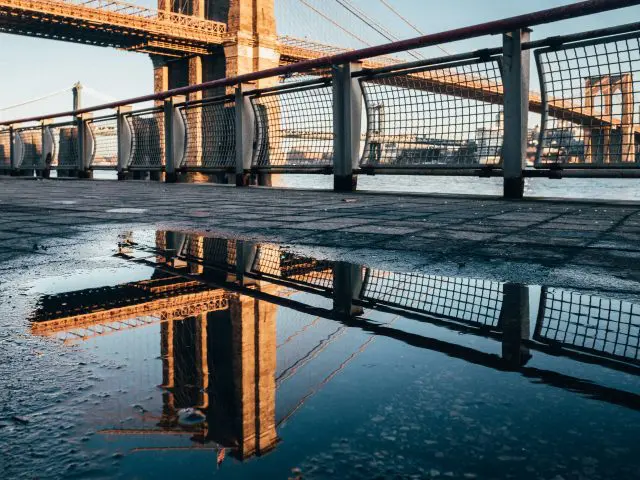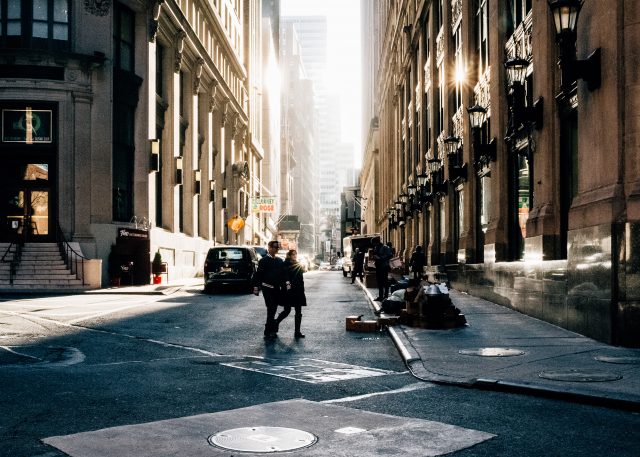Landscape photography, despite the perception, is not limited to the wilderness, beaches, and mountains. Urban landscapes, with their concrete and asphalt foundations; glass, steel and stone structures; and glowing spires can serve as subject matter equally as compelling as their nature-made counterparts.
City dwellers need not feel shut out of landscape photos — urban landscapes are, quite literally underfoot, waiting for you to immortalize their beauty.
Here are six things to look for to help you create eye-popping urban landscapes that you can be proud of.
1. Look For Color
Cities are often unfairly cast as being colorless places, all dull and gray. In reality, I think most cities are bursting with color.
Modern architecture does sometimes contribute to the perception of achromatic gloom, but color still manages to persist. From street art to neon lights to quirky storefronts, there are plenty of opportunities to incorporate color into your urban landscapes.

2. Look For Reflections
The combination of water and architecture is a well-worn trope in cityscape photography, but that doesn’t mean you should never do it. Symmetry and reflections tend to evoke a sense of awe for some reason, and such opportunities abound in cities.
You don’t have to wait for the rain to leave behind puddles. Marinas and shorelines are also ideal locations.

3. Look For Unique Structures
Unusual structures are easy to find in any city. They might come in the form of a sculpture or some other sort of display that serves as art, or they might come in the form of functional architecture.
A city’s collection of unique outdoor art and architecture is one of the primary indicators of that city’s personality. Thus, including such structures in your photos can add much more interest than traditional architecture alone might provide.

4. Look For An Alternate View
You’ve heard it countless times: for a more interesting photo, change your perspective — shoot from down low or from up high. This applies to urban landscapes, too.
Shooting from down low is pretty easy in a city where there are lots of skyscrapers. You really don’t have to change your stance much, just point your camera toward the sky and you’ll get a fantastic perspective of the buildings towering over you.
Getting a shot from up high can be thrilling, but in order to do so, you will usually have to make your way to designated lookout points, which often means you’ll have to deal with crowds.
Another way of achieving an alternate view of something is simply to find a unique composition of an oft-photographed subject and breathe new life into it.

5. Look For People
It’s a city — you won’t have any difficulty finding people. I know we’re talking about landscapes here, but it is my philosophy that human subjects are an integral part of urban landscapes and it is wholly appropriate to include them in cityscape photography.
Beyond simply adding visual interest to a scene, you can use people to demonstrate the relationship between the city and those who inhabit it.

6. Look For Juxtaposition
Most cities are a fascinating mix of old and new — they represent modernity while still clinging to pieces of the past. This is especially apparent in a city’s architecture. It’s not uncommon to find rustic structures that date back to a place’s early days nestled comfortably among the buildings have sprung up recently.
Showing the old and new together imparts a certain visual gravitas that can outline a city’s history in one shot.

Final Thoughts
There are numerous ways to photograph interesting urban landscapes. The above is only a primer to get you moving in the right direction.
While capturing cityscapes may require a slightly different approach than when capturing nature’s forms, the same fundamental principles apply to both scenarios.
A little planning, preparation, and open-mindedness will go a long way toward ensuring your success.





1 Comment
I have already purchased your Creativity Catalogue and yes.. it is a valuable tool to ‘keep me going’.
I have taken the opportunity to download most of the free eBooks listed.
Thank you so much for being an amateur photographer’s friend!!!!!
Cheers,
Michael